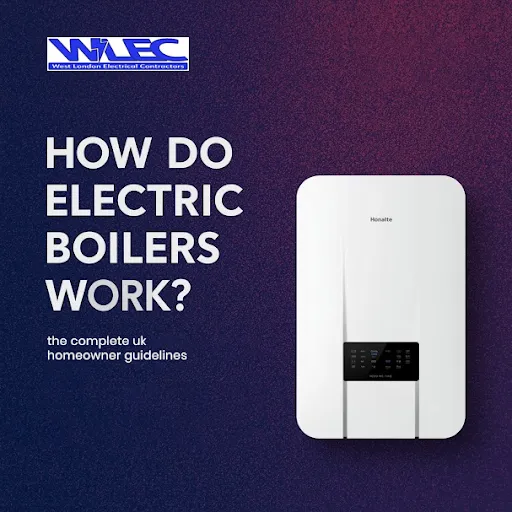
- August 9, 2025
Why Did My LED Lights Stop Working? A Complete Guide for UK Residents
LED lights promise longevity, so it’s frustrating when they suddenly go dark. Understanding common failure points helps you diagnose and fix issues quickly. Here are the top reasons your LED lights might have stopped working:
Why Did My LED Lights Stop Working? Here are the reasons:
Power Supply Problems
The power supply (transformer or driver) converts household voltage to the low-voltage DC power LEDs need. If it fails, the lights won’t turn on. Signs include flickering, partial illumination, or complete shutdown. Overloading the driver by connecting too many strips, voltage spikes, or poor-quality units causes this. Check for visible damage or burnt smells, or test output voltage with a multimeter. Replace drivers matching voltage/wattage specifications. For plug-in strips, try a different outlet to rule out circuit issues.
Loose or Damaged Wiring
Poor connections disrupt the electrical path. Inspect wires between strips, controllers, and power sources for fraying, cuts, or corrosion. Loose plugs, improperly seated connectors, or pinched wires behind walls are common culprits. Gently wiggle wires while lights are on to spot intermittent faults. For cuttable strips, ensure copper pads align perfectly when rejoining sections. Use solder or waterproof connectors for secure fixes, avoiding electrical tape alone.
Remote/Controller Malfunctions
Controllers (remotes or apps) can fail due to dead batteries, signal interference, or internal damage. Replace batteries first. Reset the controller by unplugging the power for 30 seconds. Ensure nothing blocks the IR sensor on the receiver. For Wi-Fi/RF controllers, check app connectivity and router proximity. Test lights by bypassing the controller: connect strips directly to the power supply. If they light up, replace the controller.
Overheating Issues
Excessive heat degrades LEDs and drivers. Trapped heat in enclosed fixtures, lack of ventilation, or overdriving strips beyond their wattage limit reduces lifespan. If the fixtures feel uncomfortably hot to the touch, either improve airflow around them or reduce the connected load. Aluminium channels help dissipate heat for strip lights. Avoid covering LEDs with insulation or fabrics. Thermal stress can cause premature dimming or colour shifts before total failure.
Moisture or Environmental Damage
Water exposure corrodes circuits, especially in outdoor or bathroom installations. Check for IP ratings (e.g., IP65 for water resistance). Inspect for condensation inside diffusers or corroded connectors. Seal connections with silicone gel. Environmental factors like UV rays (yellowing plastic) or extreme temperatures also degrade components. Use weatherproof enclosures for drivers outdoors. Replace damaged sections immediately to prevent spreading.
Individual LED or Segment Failure
A single dead LED can break the circuit for an entire section. Search for dark spots or “dead zones” between cut points. This phenomenon happens due to long-run voltage drops, poor manufacturing, or physical damage. Use a multimeter to test segment continuity. Replace faulty sections or use a signal amplifier for runs over 5 meters. Avoid bending strips sharply near cut lines.
Incompatible Dimmer Switches
Standard dimmers designed for incandescent bulbs cause flickering or failure in LEDs. They require compatible trailing-edge (ELV) dimmers and dimmable drivers. Symptoms include buzzing, dropouts at low brightness, or erratic behaviour. Swap to an LED-specific dimmer and ensure your driver is dimmer-ready. Match wattage limits—undersized dimmers overheat.
Voltage Inconsistencies
LEDs are sensitive to voltage fluctuations. Undervoltage causes dimness; overvoltage burns out circuits. Long wire runs between the driver and the first LED cause voltage drops—use thicker gauge wires or shorter runs. Ensure power supply voltage (12V/24V) matches strip requirements.
Final Words on Why Did My LED Lights Stop Working?
Your LED lights may not work because of a few common problems. These include a blown power supply, loose wiring, or a failed controller. Overheating, moisture damage, or a dead LED segment can also be the cause. Incompatible dimming, voltage drops, low-quality parts, and electrical surges might also be the issue. Most failures come from outside issues, including power problems, environmental stress, and installation mistakes.
The LEDs themselves are usually not to blame. Start troubleshooting by checking connections and power sources. For complex or persistent problems, professional diagnosis ensures safety and prevents further damage. At WLEC, we focus on quickly and safely diagnosing tough LED failures. Our licensed team does more than repair or replace LED lights. We provide complete electrical installations services in London.
FAQs About Why Did My LED Lights Stop Working?
Q: Can a single dead LED cause the whole strip to fail?
A: Yes, most strips are wired in series. One failed LED interrupts the circuit. Please identify the non-functioning diode, which is often dark or burnt, and proceed to replace that segment.
Q: Why do my LEDs flicker after turning on?
A: Issues such as flickering signals, incompatible dimmers, or loose wiring could be the cause. Test with a different driver first and ensure all connections are secure.
Q: How long should LED lights last?
A: Quality LEDs last 25,000–50,000 hours. Premature failure often involves external factors like heat, power surges, or poor installation.
Q: Can I repair LED strips?
A: Yes! Cut out faulty segments at marked lines and reconnect sections with solder or connectors. Ensure polarity (+/-) is correct.
Q: Do LEDs consume power when they’re off?
A: If you use a smart controller or a cheap driver, a “phantom load” can occur. Unplug the transformer or use a smart plug to cut the power completely.
Q: Why did my LEDs work initially but fail quickly?
A: This behaviour suggests overheating, voltage mismatches, or low-quality components. Check wattage loads and ensure adequate heat dissipation.
